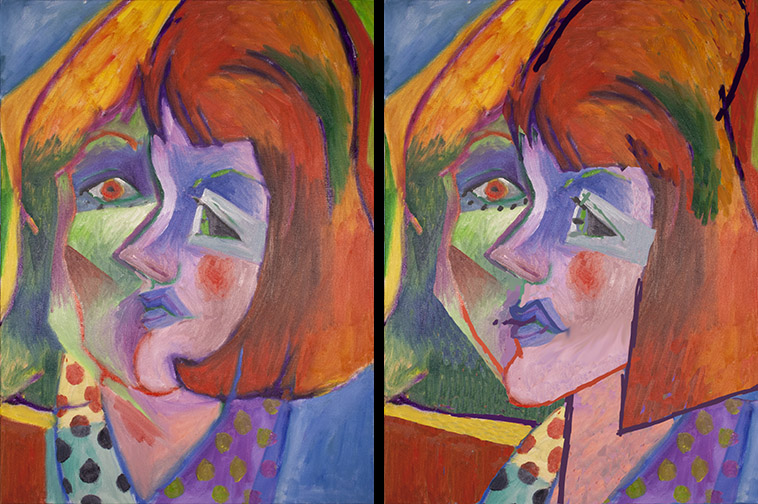
I demonstrated my approach to abstract painting for a local art group, Alliance of California Artists yesterday. I enjoy providing art demonstrations of any kind and find verbalizing the steps I take, teaches me a lot about myself and my dance with the canvas. It was a good, attentive group, they asked questions, when they had them and I did my best to answer, throughout the length of the session.
I believe in demos. It’s fascinating to see how other artists work and how they solve the same challenges we all face in every painting session, but are we truly witnessing how the demonstrating artist works. In the 2-3 hrs. usually available for a demo, it’s unlikely we’re getting anything but an abbreviated/abridged version of the artist’s approach. I know that’s true with my demos, anyway.
On average, it takes me 30-40 hrs. to complete a painting. So when I’m demonstrating my process over 2 or 3 hrs. I have to strip a tremendous amount out my normal process, if I’m to give the audience even a hint of what my creation of a painting looks like. It’s a race, from start to finish, to accomplish all you can, before the ending buzzer sounds.
On top of that, anyone who’s read, Betty Edward’s, “Drawing On the Right Side of Your Brain,” knows you can’t communicate with an audience (a left brain function) and paint in the zone (a right brain function) at the same time. So, during a demo the individual demonstrating is jumping in and out of both left and right brain hemispheres. He or she never remains deep in the creative zone for any length of time during a demonstration, so normal problem solving is handicapped. They’re making quick, snap choices, rather than the slow introspective decisions arrived at alone in the studio.
I’ve tried a few thing to get around these time challenges, but I’m not sure they’re effective. I’ve shown up with my preliminary drawing already down on the canvas, but this takes away the opportunity for viewers to watch how I proceed through a drawing. I’ve even pre-finished multiple canvas at different stages of development, like your typical cooking show does. I’d begin a drawing before the eyes of the audience, then pull a canvas with the drawing already completed from under the table. I’d then start execution of my turp wash underpainting on this drawing, before revealing a canvas with a finished underpainting on it, leaving the lions share of the demonstration to be my blocking in color and detailing approaches. I’m not sure this is what the viewers had come to see.
I’ve come to the conclusion that it’s best to start with a blank canvas and perform the whole process, albeit a truncated version, before the eyes of the audience. I’m often disappointed in the product of the session, but I’ve given the viewers at least a glimpse into my overall approach to problem solving. And isn’t that why they invited me there in the first place?
